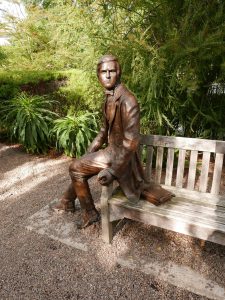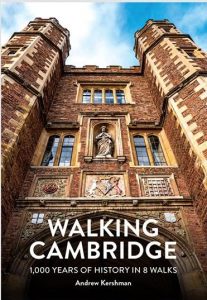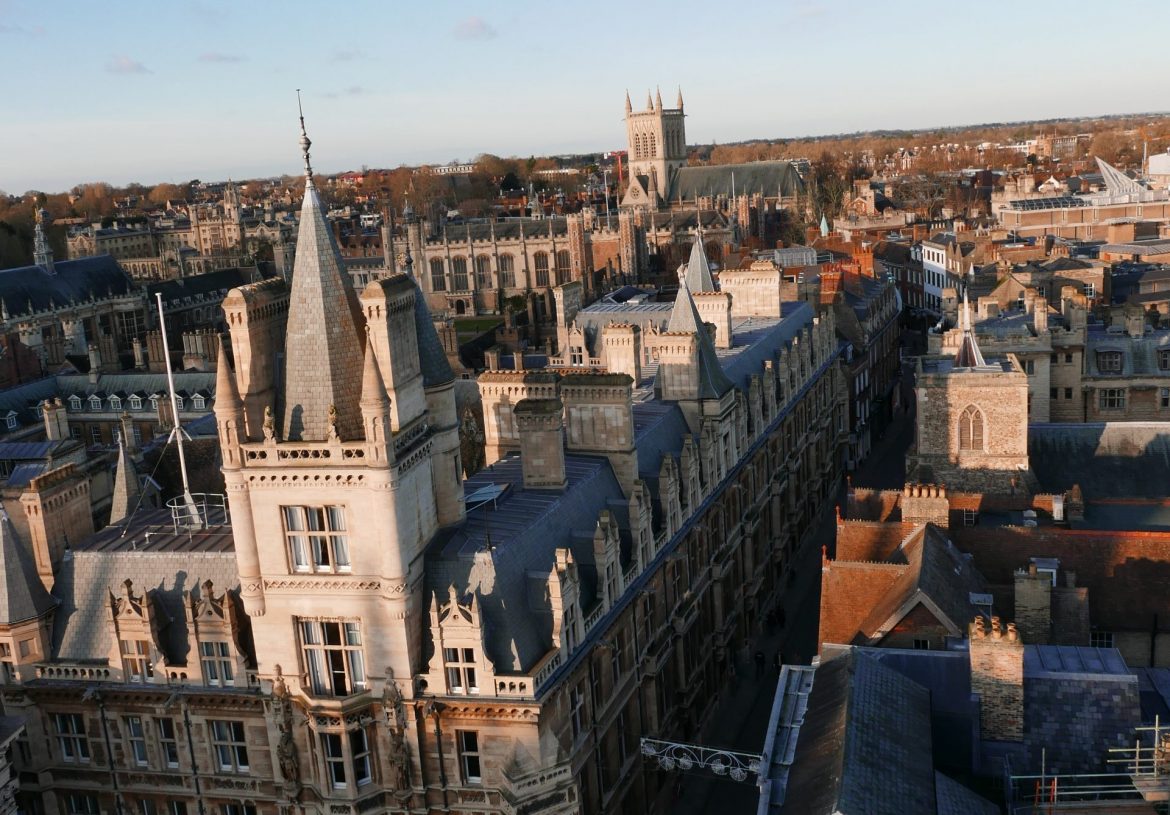Out this month is a new walking guide for Cambridge from independent publisher Metro Publications. More than a mere tourist’s guide, Walking Cambridge is a comprehensive on-foot exploration of Cambridge’s rich and fascinating history, offering eight different routes incorporating many of the city’s most iconic architectural landmarks, as well as some often-forgotten gems lurking in the city’s streets.
As it turns out, Walking Cambridge has been in the works for a long time, says its author, Andrew Kershman. “It’s taken a lot longer than I expected to write the book, as a lot of research had to be done, then once I had planned the routes they needed to be walked, and that always brought up more things to be researched,” he explains. “It was these things that I discovered while walking the streets that were the most satisfying, as they were often not found in other books.” Among these stories is the Earl of Derby pub’s history of pigeon racing, which used to take place there every Sunday. “I still have not found a book that mentions this,” Andrew comments, “but I thought it was just the kind of disappearing story that might be of interest to readers.”
The slower you go, the more you notice, and that’s one of the main pleasures of the book, slowing down and exploring Cambridge at the pace of a pedestrian
 Cambridge was always high on the publisher’s list of places to explore, and had a particular pull for Andrew; “Cambridge always seemed an exciting and rather glamorous place to explore,” says Andrew. “I thought that I knew the city quite well when I started my research, but as I found out more, I discovered just how little I knew and how much more I had to learn.” And, according to Andrew, walking is the best way to go about it. “The slower you go, the more you notice, and that’s one of the main pleasures of the book, slowing down and exploring Cambridge at the pace of a pedestrian,” Andrew adds. “I hope I’ll manage to surprise a few readers who thought they knew the city and I’m sure I’ll get some suggestions for future walks and things I’ve missed.”
Cambridge was always high on the publisher’s list of places to explore, and had a particular pull for Andrew; “Cambridge always seemed an exciting and rather glamorous place to explore,” says Andrew. “I thought that I knew the city quite well when I started my research, but as I found out more, I discovered just how little I knew and how much more I had to learn.” And, according to Andrew, walking is the best way to go about it. “The slower you go, the more you notice, and that’s one of the main pleasures of the book, slowing down and exploring Cambridge at the pace of a pedestrian,” Andrew adds. “I hope I’ll manage to surprise a few readers who thought they knew the city and I’m sure I’ll get some suggestions for future walks and things I’ve missed.”
The eight walks featured in the book cover the vast majority of the city’s streets, often starting with familiar landmarks and delving into the relatively unknown along the way. “The more I found out the more I wanted to explore, and so the pattern of the book developed in a kind of organic way,” Andrew continues. “The problem with writing about Cambridge is that there is so much to see and so many stories to tell, so choosing only eight walks was difficult.” And what about favourites? “All of the walks have a special and unique place in my memory and I loved researching all of them,” says Andrew. “I guess if I was on Desert Island Walks and had to save one from the waves it would be the Town Gate to Turnpike walk. It managed to balance the town and gown in equal measure, includes some great architecture, and ends with a monument to the discovery of an ancient treasure that now resides in the Fitzwilliam Museum. There are other close contenders for my heart, but I guess this is my favourite.”
The book aims to share the city’s untold stories with readers as they wander around Cambridge, and Andrew is a keen advocate for people to explore the city for themselves. “Nothing compares to actually doing the walks and discovering new things,” Andrew explains. “I walked up to the top of the tower of Great St Mary’s Church when I first started my research and looked out on a place that I thought I knew, but it was only at the end of my work when I took the same journey that I realised how much I’d discovered. That view across Cambridge ends the first and last walk in the book, and I hope a few readers enjoy that experience with a similar feeling of awe for the city and its history.”

Walking Cambridge is available to purchase for £11.99 from the Metro Publications website, metropublications.com

